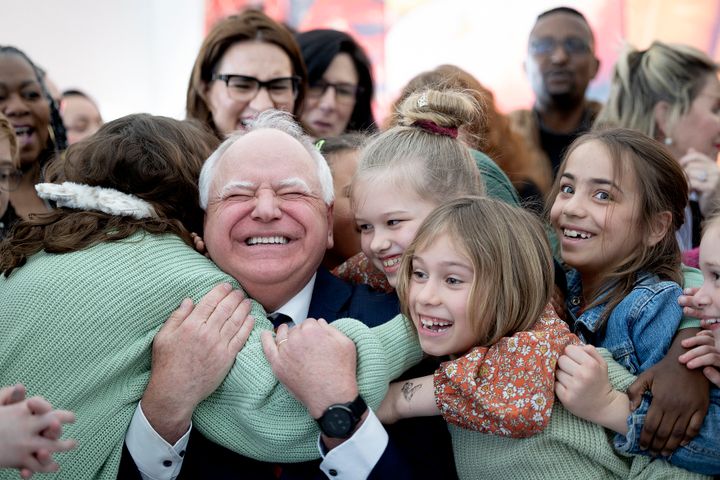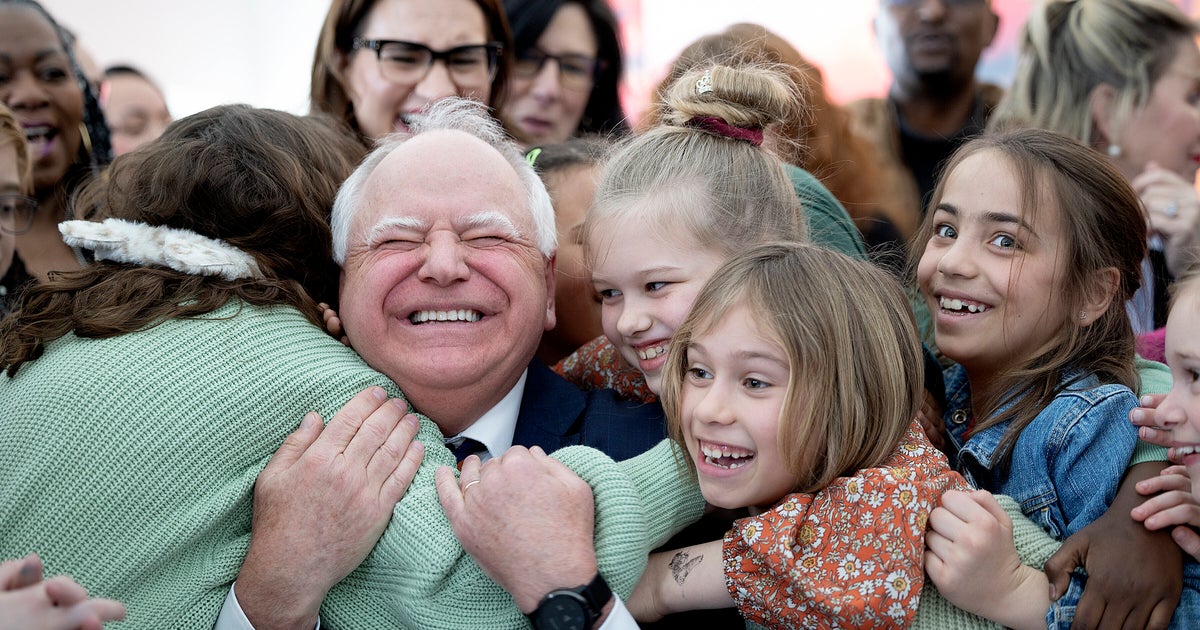Making school meals free for all students in Minnesota is one of Tim Walz’s signature achievements as governor.
It’s a program that Kristine Black, the principal of Hidden Valley Elementary School in Savage, Minnesota, says has positively impacted every student at her school.
“We know the financial part is helpful for families, so that relieves stress,” said Black, whose school has carved out 15 minutes at the beginning of the day for students to eat breakfast in their classrooms.
“Knowing they’re going to have a strong, solid breakfast is great as well,” Black said. “Knowing they’re going into their classroom and they’re going to be supervised, it builds our home and school connection.”
When he takes the stage at the Democratic National Convention on Wednesday evening, Walz — tapped only weeks ago by Vice President Kamala Harris to be her running mate in her quest to succeed President Joe Biden in the White House — will be introducing himself to the nation and cementing his status as one of the Democratic Party’s standard-bearers.
As Minnesota’s governor since 2019, Walz is known for overseeing an ambitious progressive policy agenda that includes 12 weeks of paid family leave, free public college tuition for low- and middle-income families, and the ability for anyone to buy into Medicaid, to name just a few of the measures that established Walz as a champion of progressive reforms in a state where Democrats came into full power only two years ago.

Star Tribune via Getty Images via Getty Images
Even among those policy victories, school lunch stands out. A voter survey published Wednesday by the Democratic polling firm Blueprint found free school lunch “is the only one of Walz’s most popular accomplishments surveyed that more than 40% of voters have heard about.” And it’s a major reason Walz is the only member of either presidential ticket whose favorability isn’t underwater.
But the Walz “Minnesota Miracle” reforms are unlikely to happen again on a national scale, barring … a miracle.
Neither Harris nor Walz has made the type of reforms Walz backed in Minnesota a focus of the campaign. In fact, Walz’s record of backing progressive policymaking was initially seen as a possible liability for a party hoping not to seem too liberal for moderate swing voters who might be turned off, for instance, by Walz’s support for a bill extending driver’s licenses to all residents regardless of their immigration status.
School lunch might be Walz’s best-known achievement because it’s the simplest and because it’s about feeding kids, a concept even Republican vice presidential candidate JD Vance has praised. On top of that, school lunch reflects Walz’s biography — the governor and former congressman previously worked as a schoolteacher occasionally tasked with tracking which kids paid for lunch, a process that exposed less fortunate kids to “lunch shaming.”
“Kids knew who had the other-colored lunch ticket,” Walz told reporters last year. “And all of a sudden, you’ve created this situation of ‘who didn’t have it,’ and we’ve created tensions of inequities in our very place where kids who need that lunch are.”
It would likely take total Democratic control of Washington to enact Minnesota’s Democratic agenda on a national scale, and that’s a long shot given Democrats’ tough position in the Senate map. Even the recent push for free school meals in Minnesota and other states resulted from a burst of bipartisanship in Washington, D.C., brought about by nothing less than a global pandemic.
Congress enacted a slew of bold policies in 2020 to mitigate the economic harm of business and school shutdowns, including a massive experimental layoff protection program and an unprecedented increase in unemployment insurance. Part of the package made school lunch free for all students for two years.
After Biden signed the American Rescue Plan into law in 2021, the era of massive social policy experimentation in Washington seemingly ended, and incremental progress returned.
Minnesota was one of eight states that stepped up to make school meals universally available after the pandemic expansion expired, according to the Food Research and Action Center, an influential nutrition advocacy group.
“This bill puts us one step closer to making Minnesota the best state for kids to grow up, and I am grateful to all of the legislators and advocates for making it happen,” Walz said in March 2023 when he signed the bill into law.
Feeding children isn’t exactly a radical idea. The National School Lunch Program came about in 1946 and today reaches more than 30 million kids in all 50 states. It’s been gradually expanded to include breakfast, snacks and summer meal distribution. But most states still make schools sort out which kids are deserving enough for a discount, rather than making the program available to all.
“The idea of offering free school meals to all students is not new. This has been something that people have been pushing for for decades,” Alexis Bylander, senior child nutrition policy analyst at the Food Research and Action Center, said in an interview.
“A lot of states realized that they didn’t want to go back to a system of kids paying different prices for the same meal,” Bylander said, adding that the temporary pandemic policy “really served as a trial run for what a nationwide healthy school meals for all policy could look like.”
A step toward universal school lunch came in 2010 with the Healthy, Hunger-Free Kids Act, a law championed by then-first lady Michelle Obama that boosted nutrition standards and gave states the option to give free meals to whole schools if just 40% of kids were poor enough to qualify. The Biden administration lowered the threshold to 25%, but a more meaningful step toward universal free lunch would require an act of Congress.
No Republican has co-sponsored a universal lunch bill, but Vance said a nice thing about the idea in response to a reporter’s question earlier this month, telling Semafor “we don’t want kids starving in school” and that Walz, like any politician, isn’t “wrong on 100% of issues.”
A spokesperson for Vance declined to elaborate on his school lunch views.
The right-wing blueprint for a second Trump presidency known as Project 2025, meanwhile, says free school lunch should only be for poor kids and Congress should unwind the various expansions that have served rich and poor alike. And most Republicans in the House backed a budget plan that would do so.
“Federal school meals should be focused on children in need, and any efforts to expand student eligibility for federal school meals to include all K-12 students should be soundly rejected,” the Project 2025 document says.
Minnesota’s universal school lunch and breakfast program, meanwhile, not only guarantees that students will be fed when they’re at school, supporters say it eliminates the stigma associated with qualifying for free or reduced meals, and allows students to begin their day on a level playing field. As Walz might say, the policy helps kids mind their own business about which families don’t have as much money.
“Everyone has breakfast, everyone has lunch. No one has to worry about it,” said Black, the Minnesota principal. “No one talks about that as an identifier for kids.”

